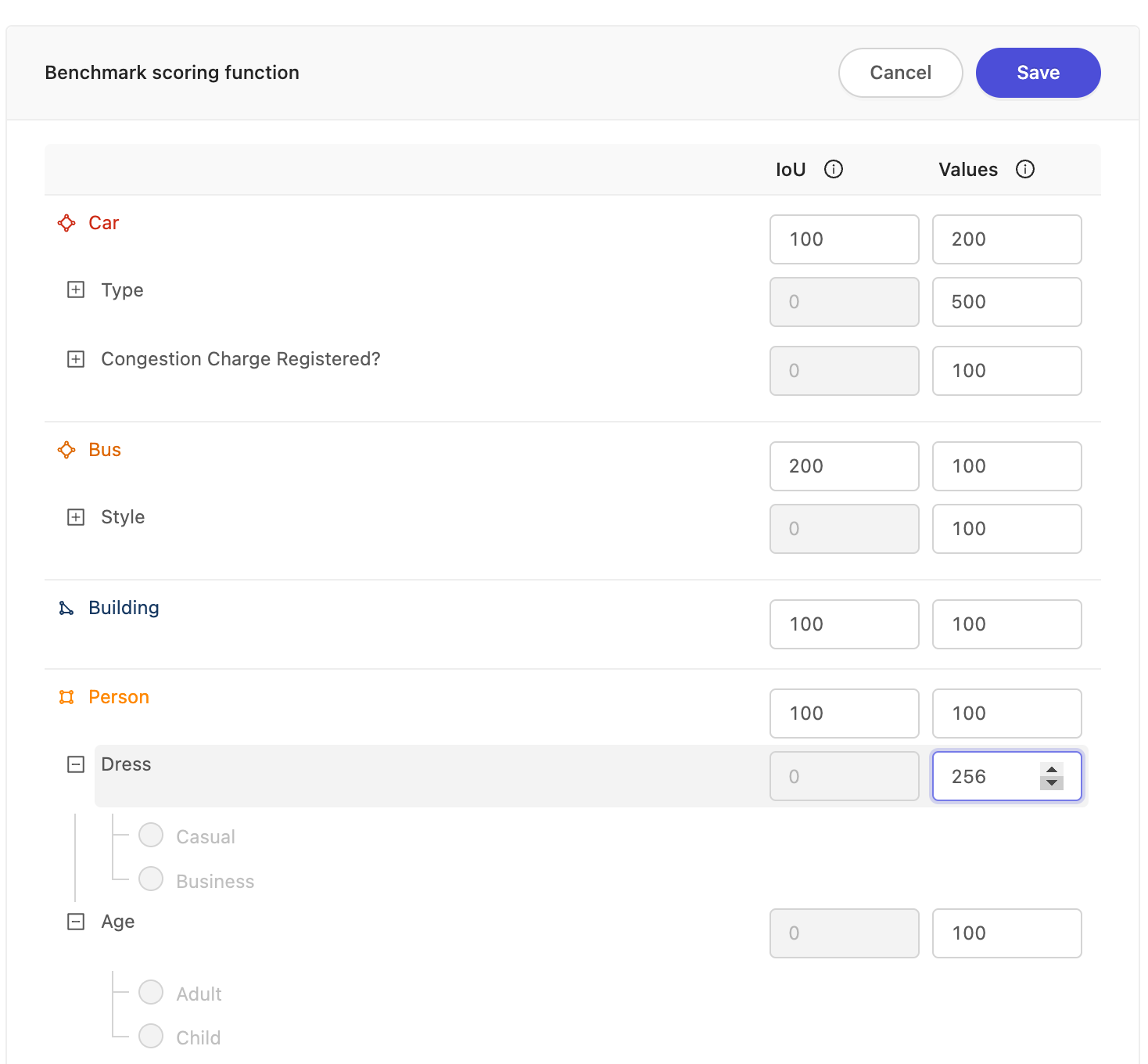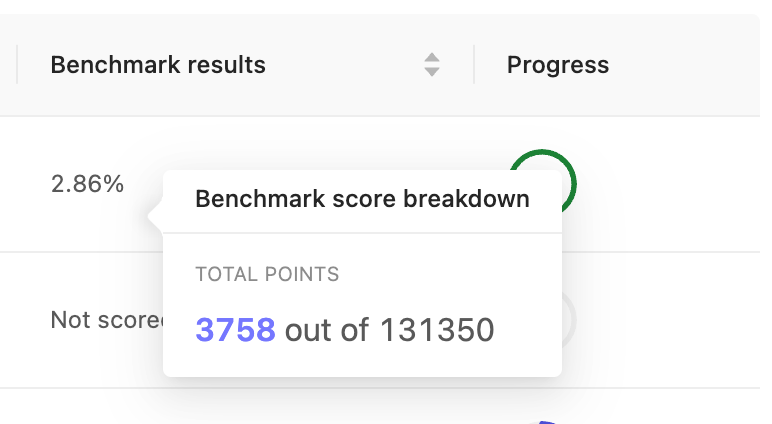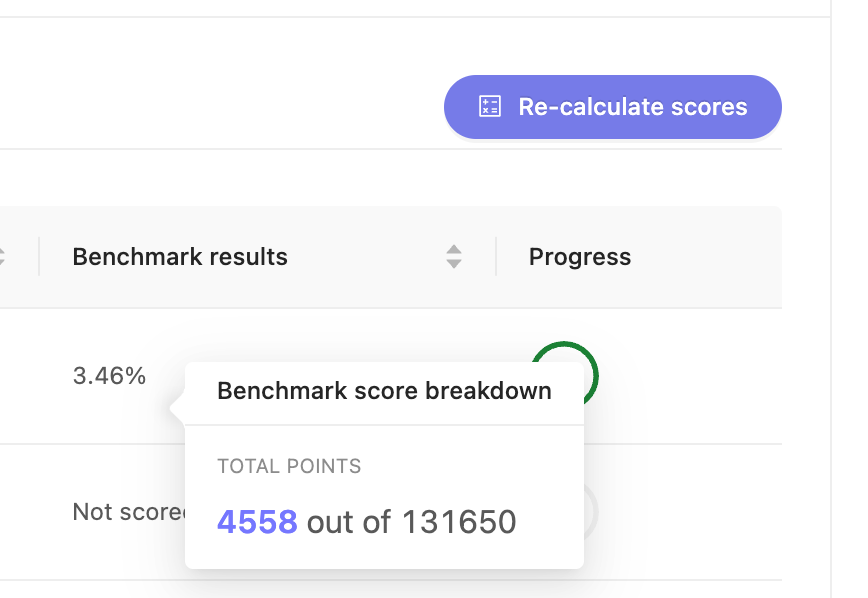Important Information
- Annotator training Projects can only use Workflow Projects as a benchmark source. Workflow Projects include Consensus and non-consensus Projects.
- Only ONE Workflow Project can be used as a Benchmark Project for a Training Project.
- Benchmark Projects can be any Workflow Project that has at least 1 task in the COMPLETE stage.
- Training Projects can have up to 100 tasks for users to annotate. The number of tasks depends on the number of tasks in the COMPLETE stage of the Benchmark Project.
- The latest tasks in the COMPLETE stage of a Benchmark Project are used in a Training Project. A maximum of the latest 100 tasks become part of the Training Project.
- Up to 24 users can be added to participate in a Training Project during project creation. You can add more users (groups and individual users) to the Training Project from the Settings page after project creation.
Supported Modalities and Ontology Shapes
Supported modalities for Training Projects
| Modality | Supported? |
|---|---|
| Single images | ✅ |
| Image groups | ✅ |
| Image sequences | ✅ |
| Videos | ✅ |
| DICOM | ✅ |
| Audio | ❌ |
| Text | ❌ |
| HTML | ❌ |
| ❌ |
Supported Ontology shapes
Ontology shapes that are not supported can be included in a training Project’s Ontology, but they are ignored when annotator performance is evaluated.
| Shape | Supported? |
|---|---|
| Bounding box | ✅ |
| Rotatable bounding box | ✅ |
| Polygon | ✅ |
| Polyline | ❌ |
| Keypoint | ✅ |
| Bitmask | ✅ |
| Object primitive | ❌ |
| Audio region | ❌ |
| Text region | ❌ |
Creating training Projects
1. Create the source Project(s)
The first step to training annotators is creating a source/benchmark Project that contains ground-truth labels. These labels provide a ‘gold-standard’ for your annotators to be trained and graded on.Training Projects automatically use the Ontology of Benchmark Project you select.
2. Create the ground-truth labels
After creating the source/benchmark Project, you need to add the ground-truth labels. You can add ground-truth labels by performing one of the following:- Labeling data on the Encord platform.
- Using an Agent to label your data: Task Agent or Editor Agent
- Uploading labels using the SDK.
Expert annotators should create ground-truth labels, because these labels represent the ‘gold standard’ for your annotators. Once you have ground-truth labels, train your annotators to replicate the labels using your training Project.
3. Create the training Project
After labeling a ground-truth Project, it is time to create the annotator training Project.-
Go to Annotate > Projects > Training projects.
The Training projects page appears.
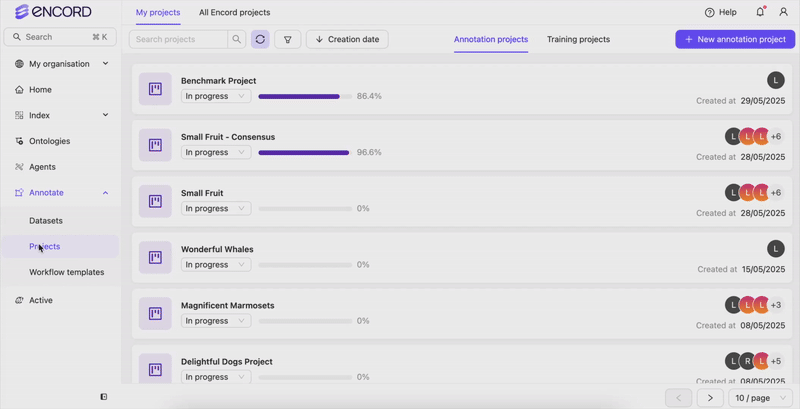
- Click +New training project.
- Specify a meaningful name and description for your Training Project.
- Select or create any Project Tags that might be required.
- Click Next step to continue. The Select project page appears.
-
Select the Workflow Project that contains the desired ground-truth labels.
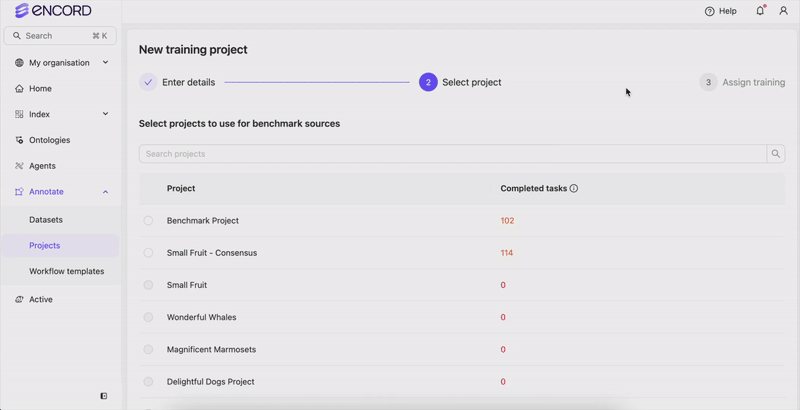
-
Set up the initial configuration of the benchmark function, which determines how trainees are evaluated against the ground-truth labels.
- Single frame-level classification only assesses classification instances.
- Use Dynamic benchmark for combinations of objects and classifications. Dynamic benchmarks can be calibrated by setting the relative weights of two evaluation metrics.
- Intersection over Union (IoU) is an evaluation metric that assesses the accuracy of labels compared to the ground truth / gold standard. If labels fully overlap with those in the ground truth full points are awarded. Conversely, if there’s no overlap between a label and the ground truth labels then no points are awarded.
For Keypoints, the IoU represents a measure of distance between the annotator’s point, and the benchmark point. The larger the distance, the lower the IoU score.- Category is an evaluation metric based on correctly identifying the Ontology category. In the example above correctly identifying an ‘Apple’ awards 100 points, while a wrong or a missing category awards no points.
For more information on how trainees are evaluated, contact [email protected]
- Add trainees and create the Project. Add trainees as a group, or as individuals. Click Create training program to create the training Project.
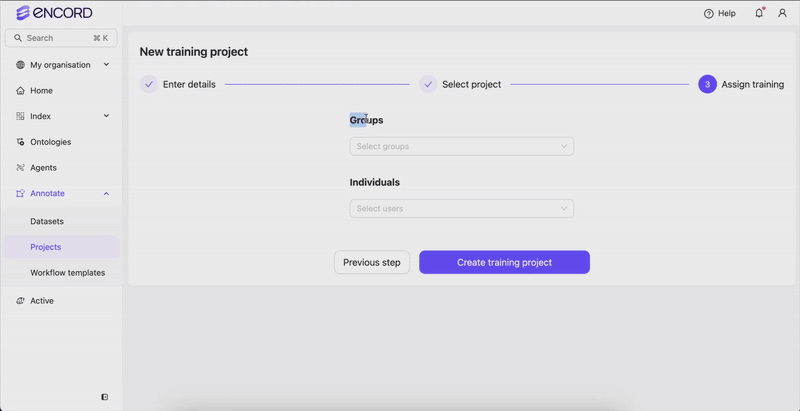
Working with training Projects
This section explains how to run a successful annotator training Project. If you do not yet have a training Project, head over to creating a training Project to get started.Roles and permissions
| Permission | Admin | Team Manager | Annotator |
|---|---|---|---|
| View benchmark project source | ✅ | ❌ | ❌ |
| Edit benchmark scoring function | ✅ | ❌ | ❌ |
| Add annotation instructions | ✅ | ❌ | ❌ |
| Delete | ✅ | ❌ | ❌ |
| Invite team members | ✅ | ✅ | ❌ |
| Manage team permissions | ✅ | ❌ | ❌ |
| Manage admins | ✅ | ❌ | ❌ |
| Annotate tasks in the task management system | ❌ | ❌ | ✅ |
| Control assignments & status in the task management system | ✅ | ✅ | ❌ |
How to run annotator training
1. Onboard your annotators
You can add annotators during the creation phase, or by going to Settings > Team and inviting new annotators. Remember that unlike in annotation Projects where each piece of data can only be seen by one annotator at a time, training Projects score each annotator against the same set of benchmark tasks. Therefore, a copy of each benchmark task will be added to the Project for each annotator added.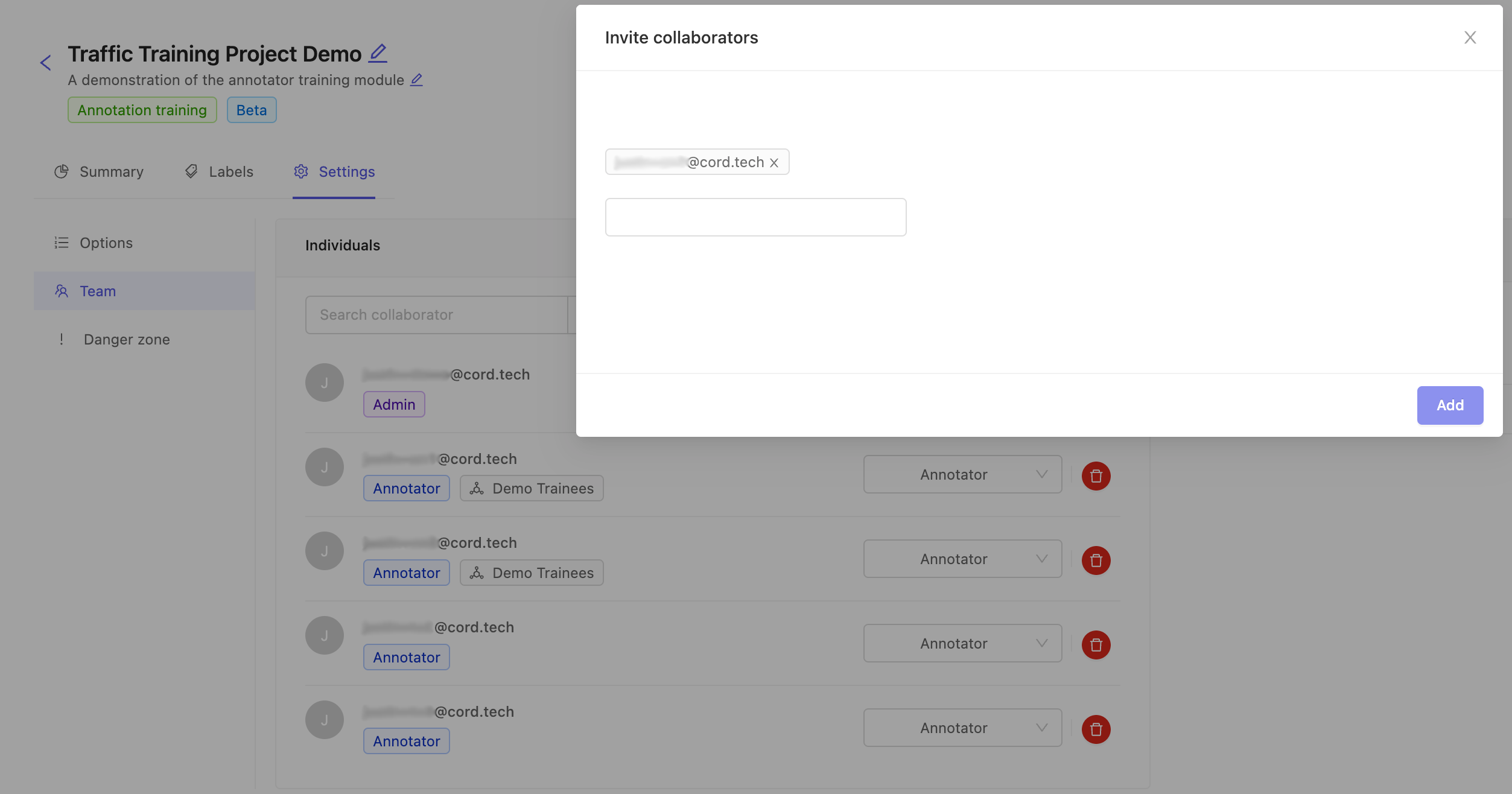
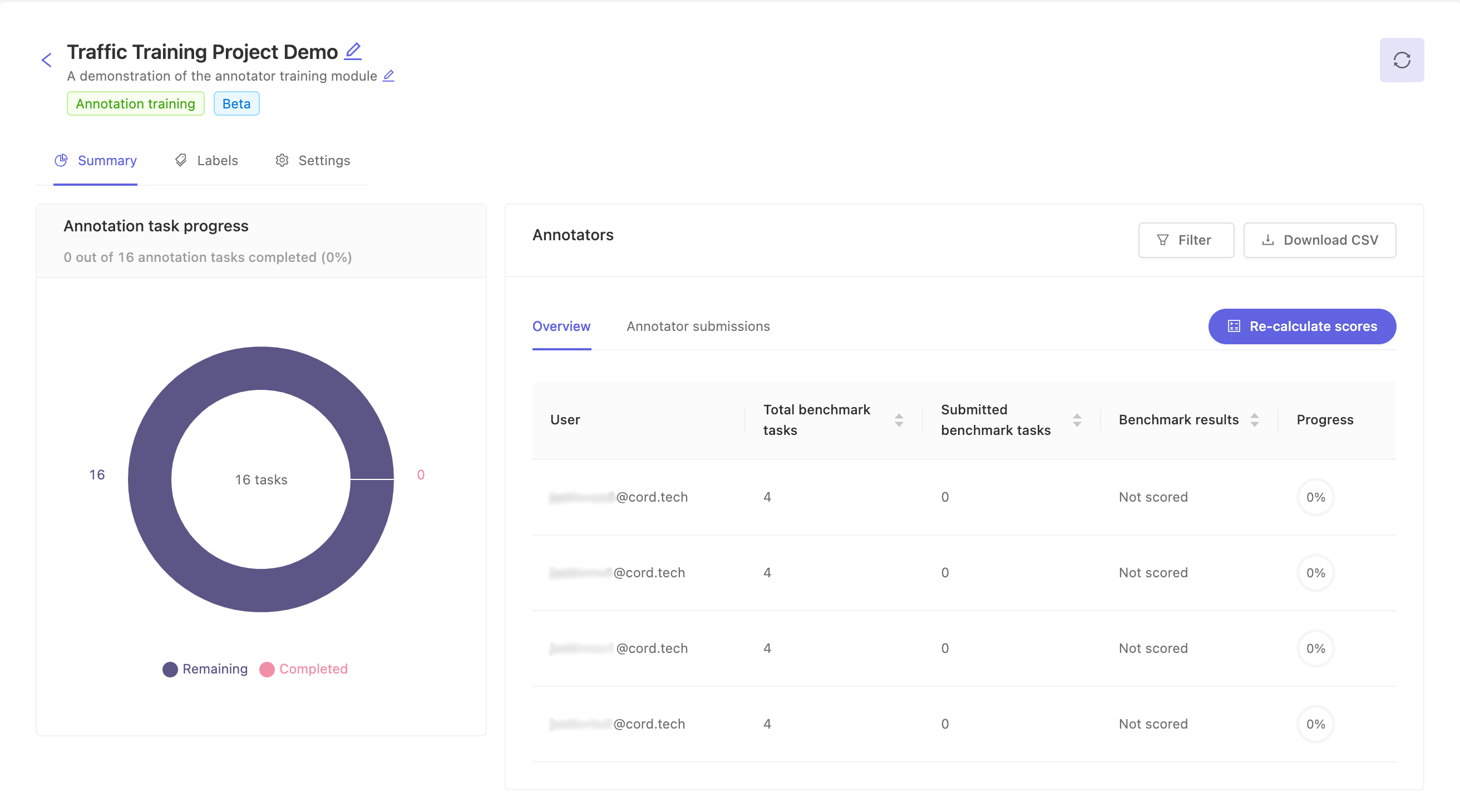
The nature of training Projects is to train annotators. Therefore, tasks are not created for admins assigned to the Project and administrators can not access annotator tasks using the Label > Queue tab. This is to prevent administrators from accidentally completing training tasks meant for annotators. Administrators can still confirm annotator submissions using the Activity and Data tabs in the labels page as needed.
2. Annotators proceed through the benchmark tasks
Annotators can access the training Project using the URL you share with them.Annotators see a simplified interface which shows only their tasks in both the summary and labels queue pages. Annotators can start their evaluation tasks by clicking the Start task button in the upper right or clicking Initiate next to any given labeling task.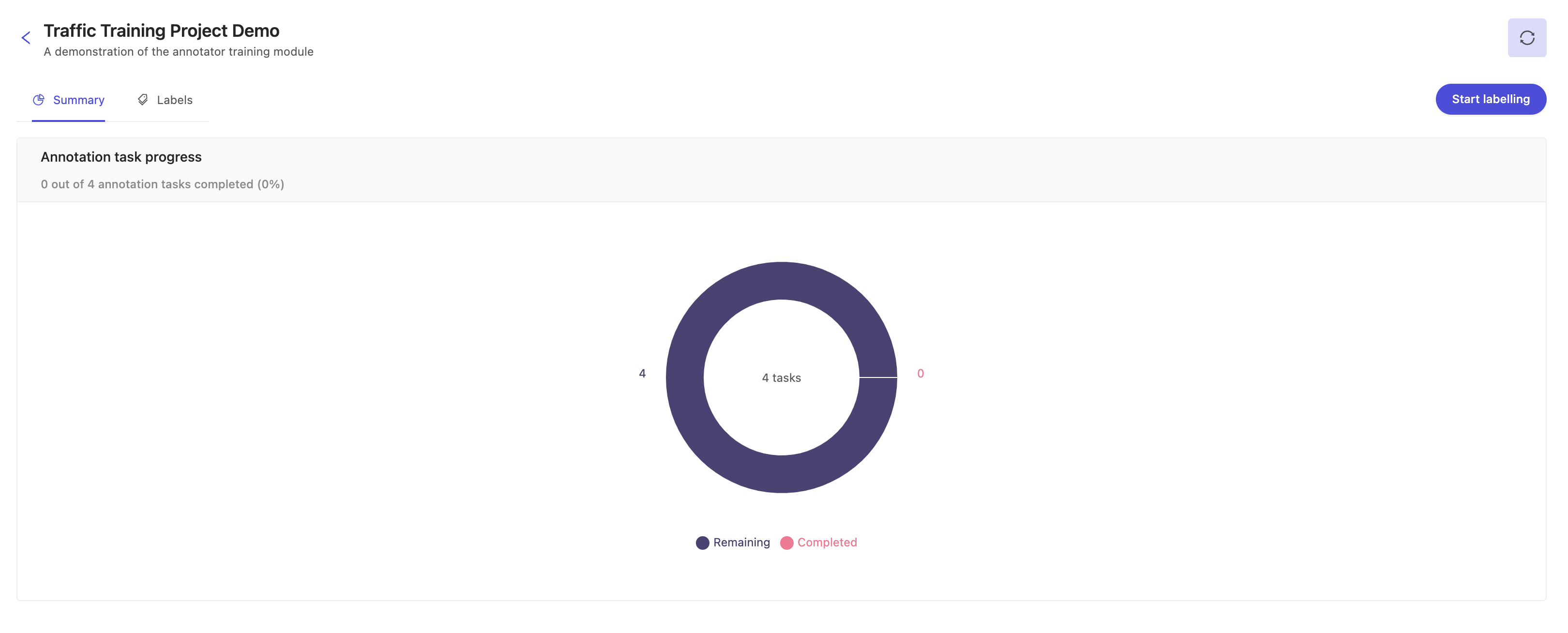

3. Evaluate annotator performance
Submitted tasks are automatically run through the benchmark function, and the annotators performance on the task is computed. Project administrators can confirm annotator progress and performance in the Summary page. Use the Overview tab for quick insights into overall annotator performance. Use the Annotator submissions tab to confirm individual task submissions on a per-label basis.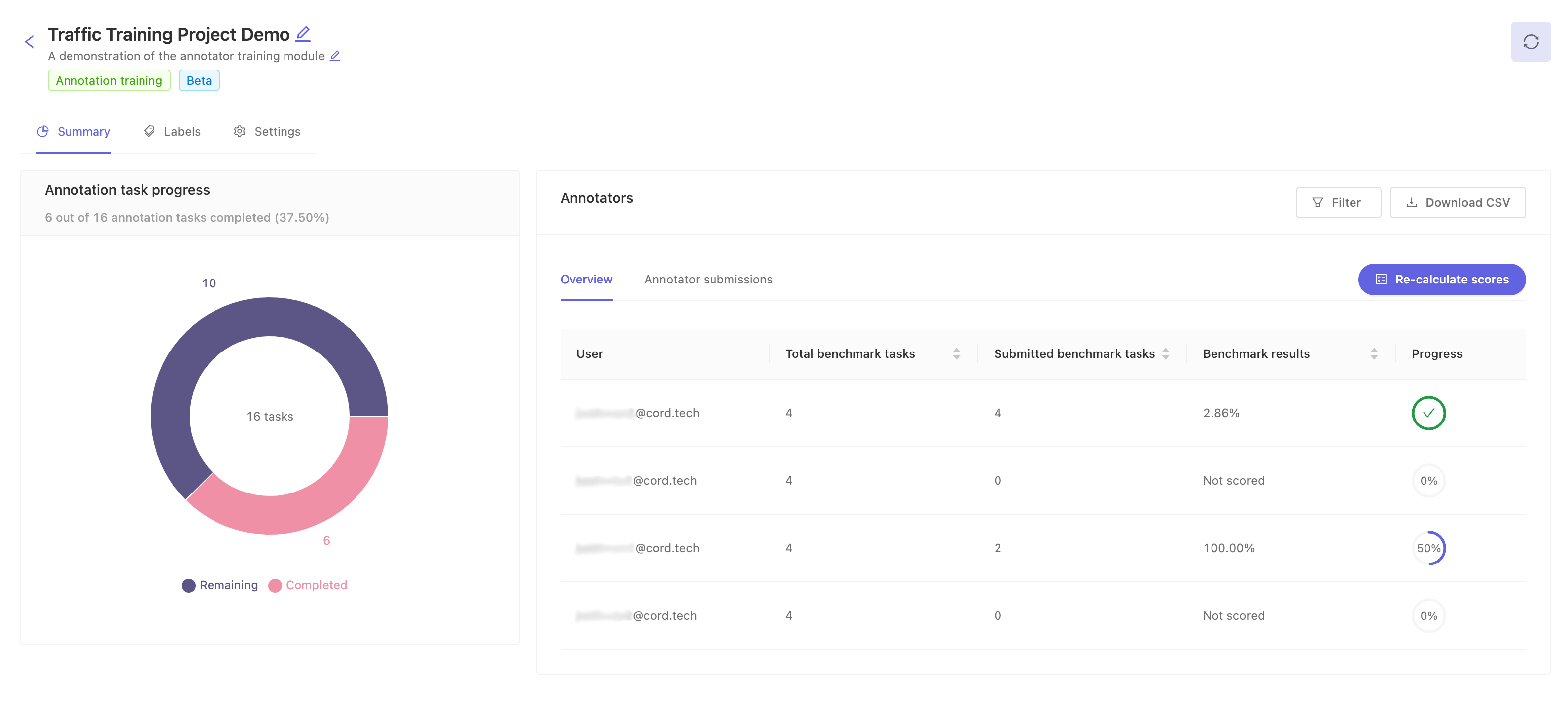

Some teams may need further insight into the details of the benchmark function in order to devise an accurate system. However, detailed knowledge of the benchmark function may unduly influence trainees behavior. Contact [email protected] for a detailed explanation of how annotators are evaluated.
4. Adjust the benchmark function and re-calculate scores
If you feel that annotator score distributions do not correctly reflect the skill displayed, the benchmark function can be adjusted and annotator scores can be recalculated. Go the Settings page, and find the section marked ‘Benchmark scoring function’. Press the Edit button to enable the function’s weight editor and change the values to match your new plan. Finally, press Save in the upper right to persist the new function configuration.